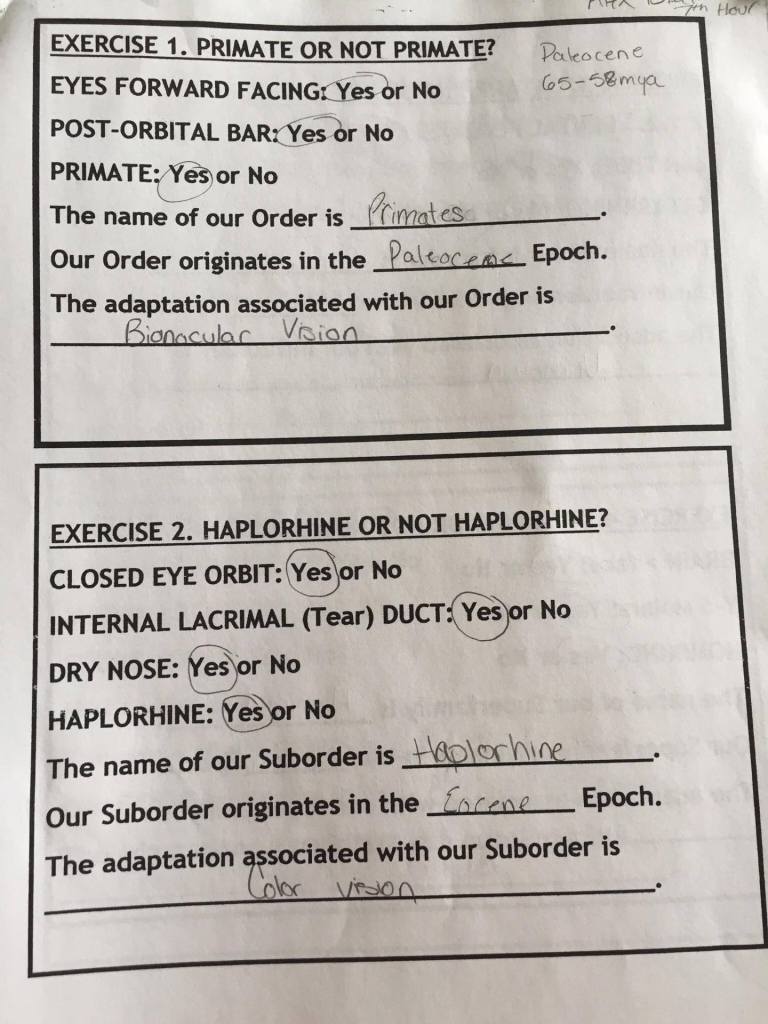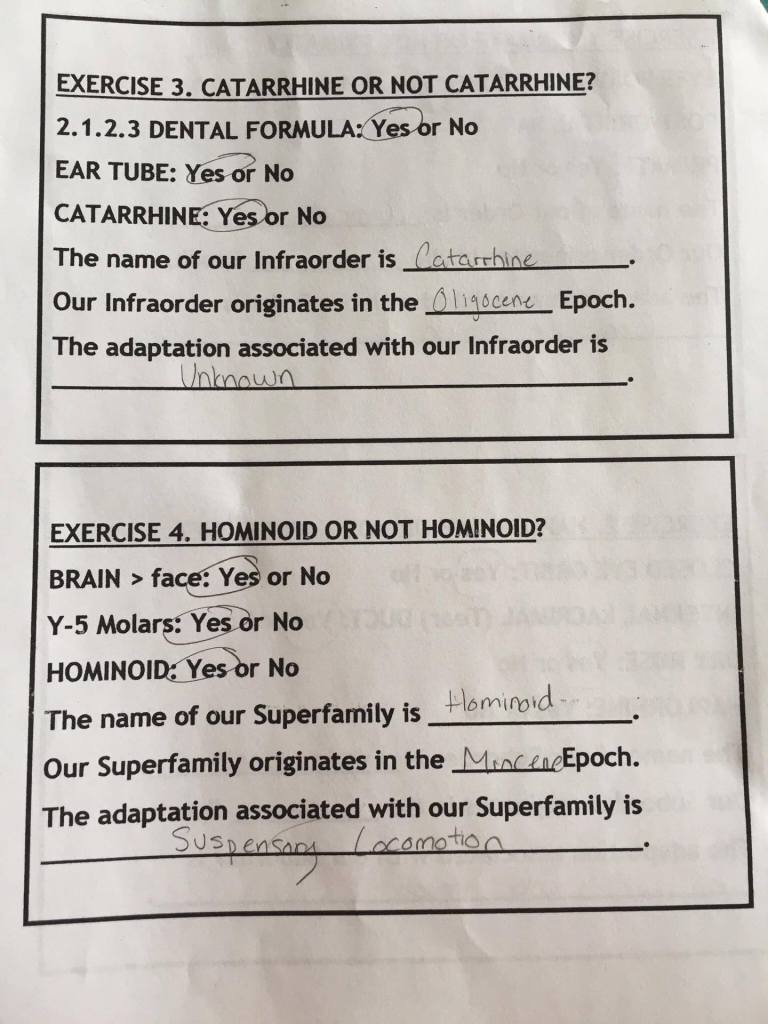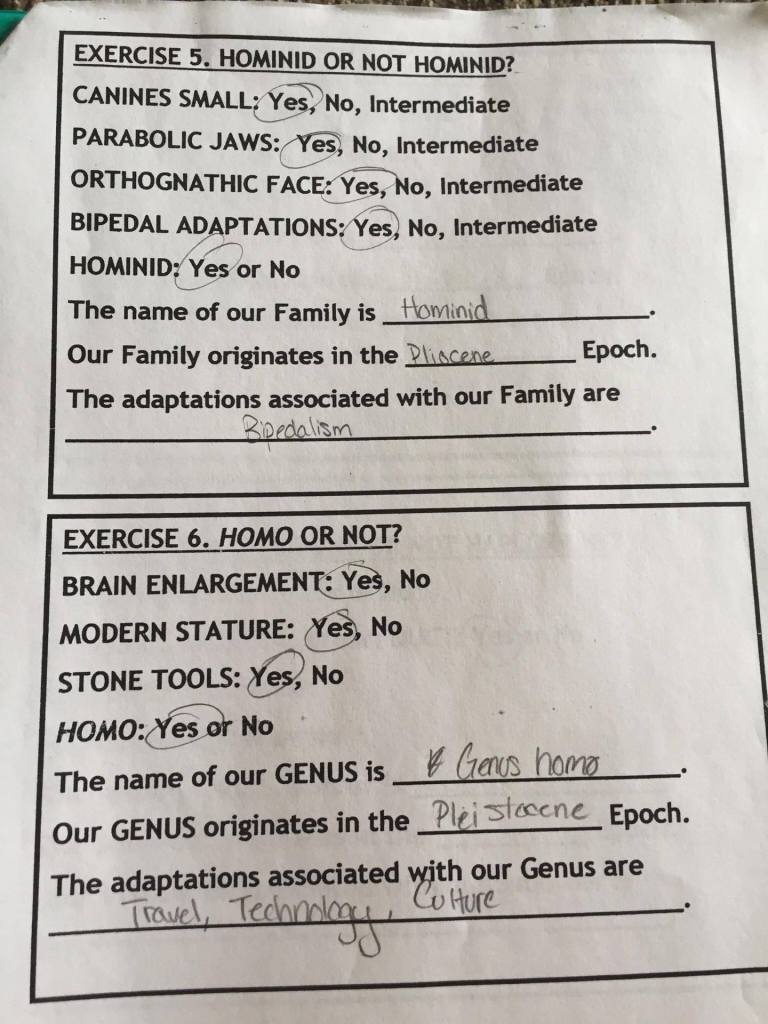
In contrast to microevolution, there is also macroevolution. Macroevolution is the opposite of microevolution. It is the major change in groups over a long period of time. To observe these changes based on fossils. What did we do with these fossils? We tried to classify them and narrow it down to what type it might be. The ending product would eventually determine if it was a human fossil or how close it was to a human fossil.
Luckily, I was given an easily distinguishable human head. So, all of the traits we needed to observe and classify were definitely there. But, just for practice and to know, we still identified and classified the head and traits.
First, we had to determine if it was a primate or not. A primate was an Order of mammal that came from the Paleocene Epoch,or age. One thing that came from the primates was binocular vision. Binocular vision is when your vision overlaps giving you a wider view range. How did we identify it? By seeing if the eyes were facing forwards and if they had a post orbital bar, which is a fancy word for eye sockets.
Above, we then went on the determine if the Suborder had been a Haplorhine at some point in it’s past life. The Haplorhine evolved during the Eocene Epoch. Once in this suborder, these organisms adapted color vision. Our identifying features were closed eye orbits and internal lacrimal ducts, or tear ducts. Also, you can’t tell so on the skeletons, but all Haplorhine’s have dry noses.
After that was the Catarrhine Infraorder, which originated from the Oligocene Epoch. It’s unknown what adaption came from this Infraorder. We could identify the ear tube and catarrhine. Also, there was the dental formula of 2.1.2.3. This means on a half of your teeth are 2 incisors, 1 canine, 2 premolars, and 3 molars.

Then, we had the Hominoids in the Superfamily. This came from the Miocene Epoch. Here, the adaptation was suspensory locomotion. With suspensory locomotion, we are able to rotate our shoulders. The features we identified here were the brain capacity being bigger than the face size and the Y-5 feature on your molars.
For the fifth category, we classified weather the Family was from the Hominid Family. Hominids come from the Pliocene Epoch. Here, we see the infamous bipedalism. With bipedalism, we see creatures who can walk on two legs. There were a few of identifying features here. Small canines, parabolic jaw, and an orthognathic face.

Lastly, there were the homos from the Genus group. These come from the Pleistocene Epoch. Here we start to see things like travel, technology, and culture arrive. You identify these by their enlarging brains, modern stature, and stone tools. And, as we all know, humans are homo sapiens. So, us humans have evolved from all of these different types of groups. This is a huge example of macroevolution.
